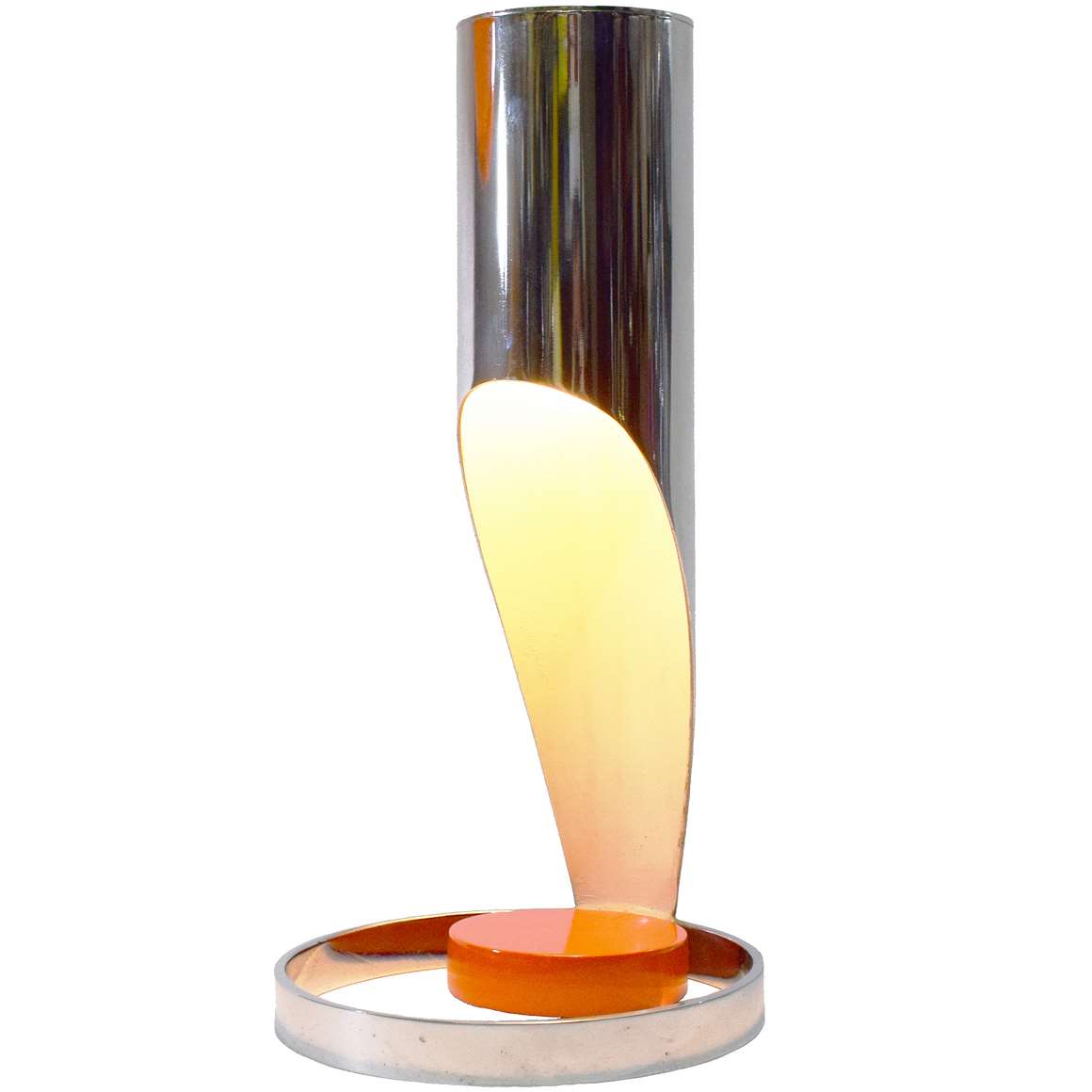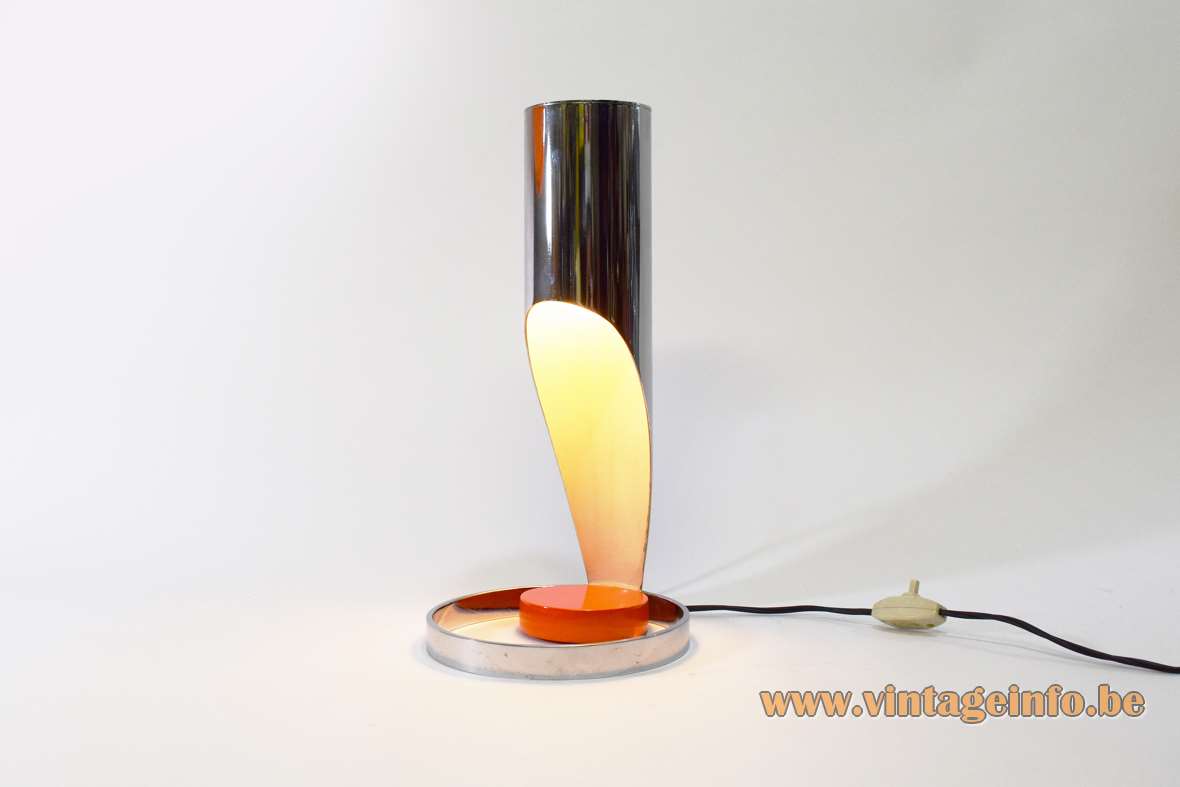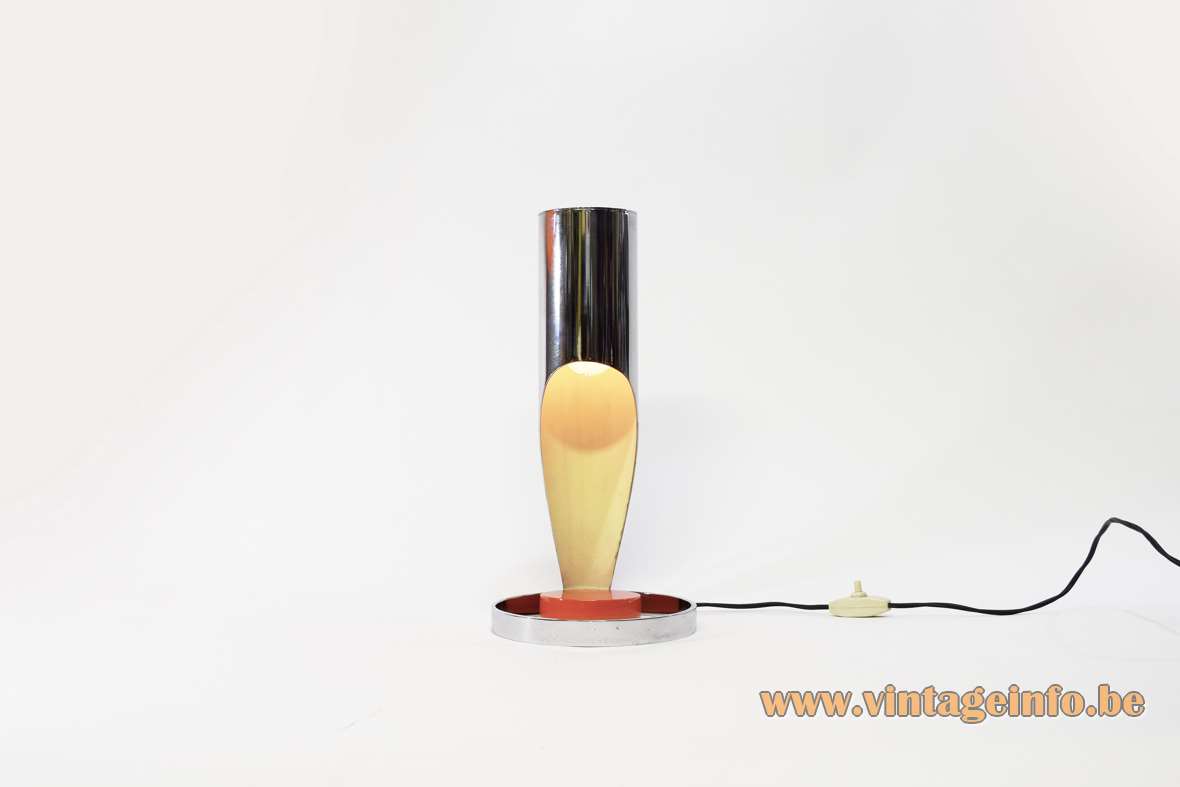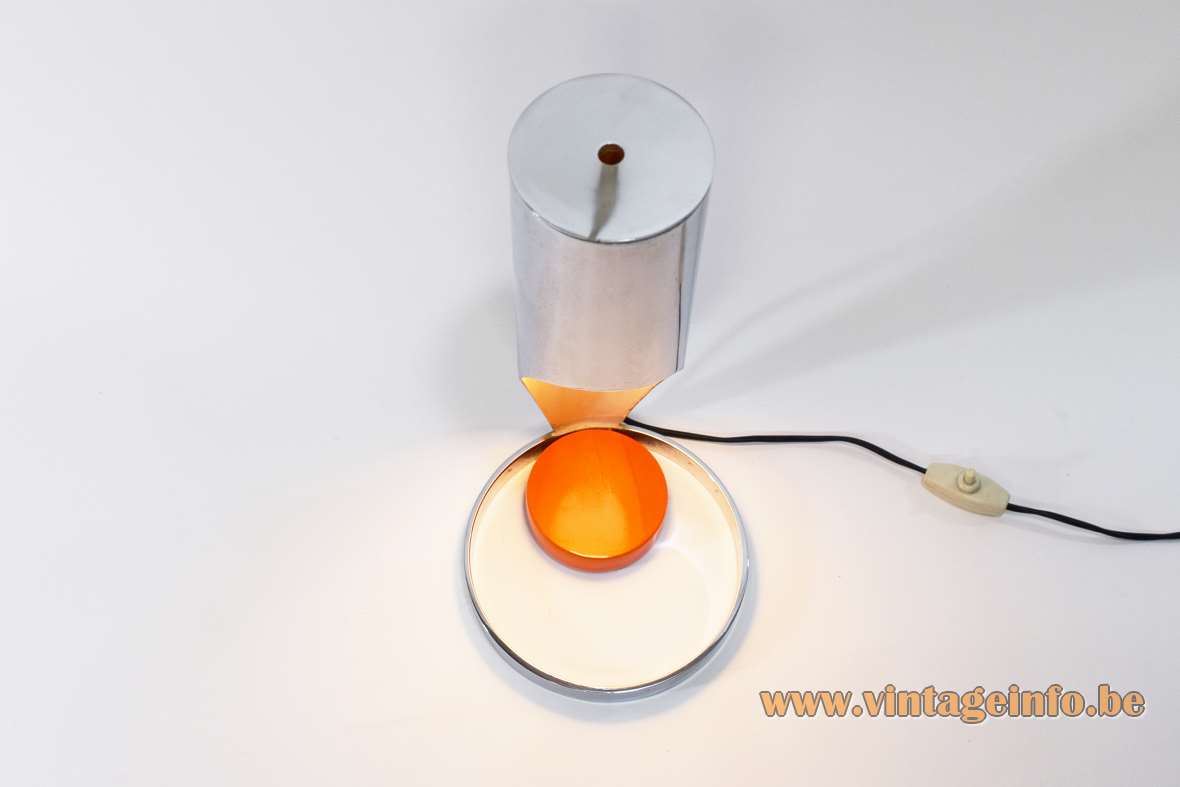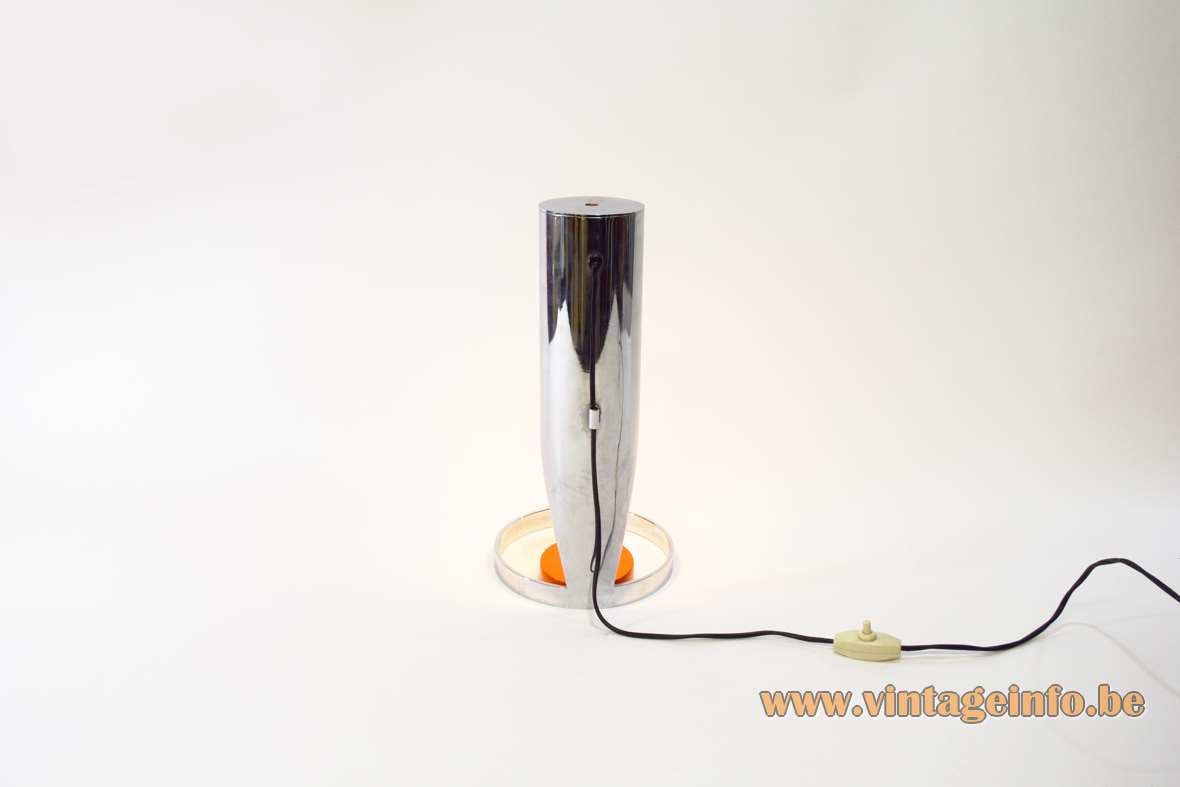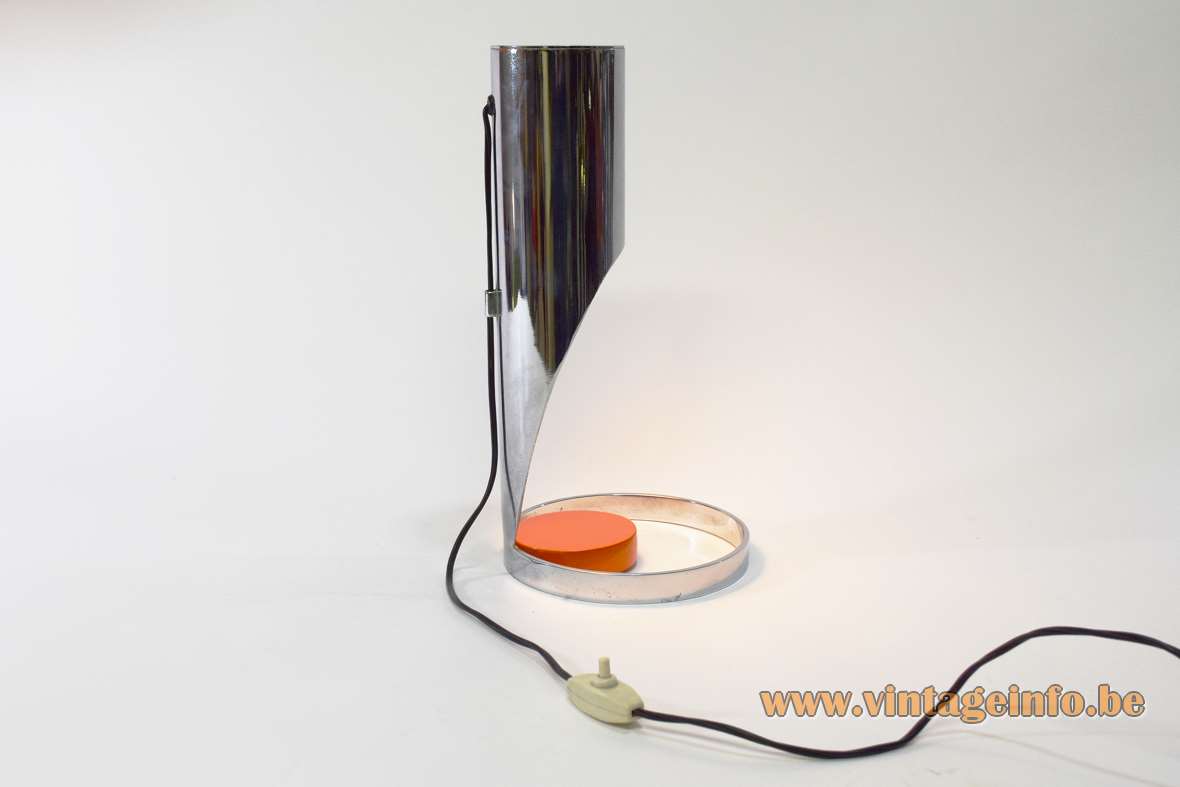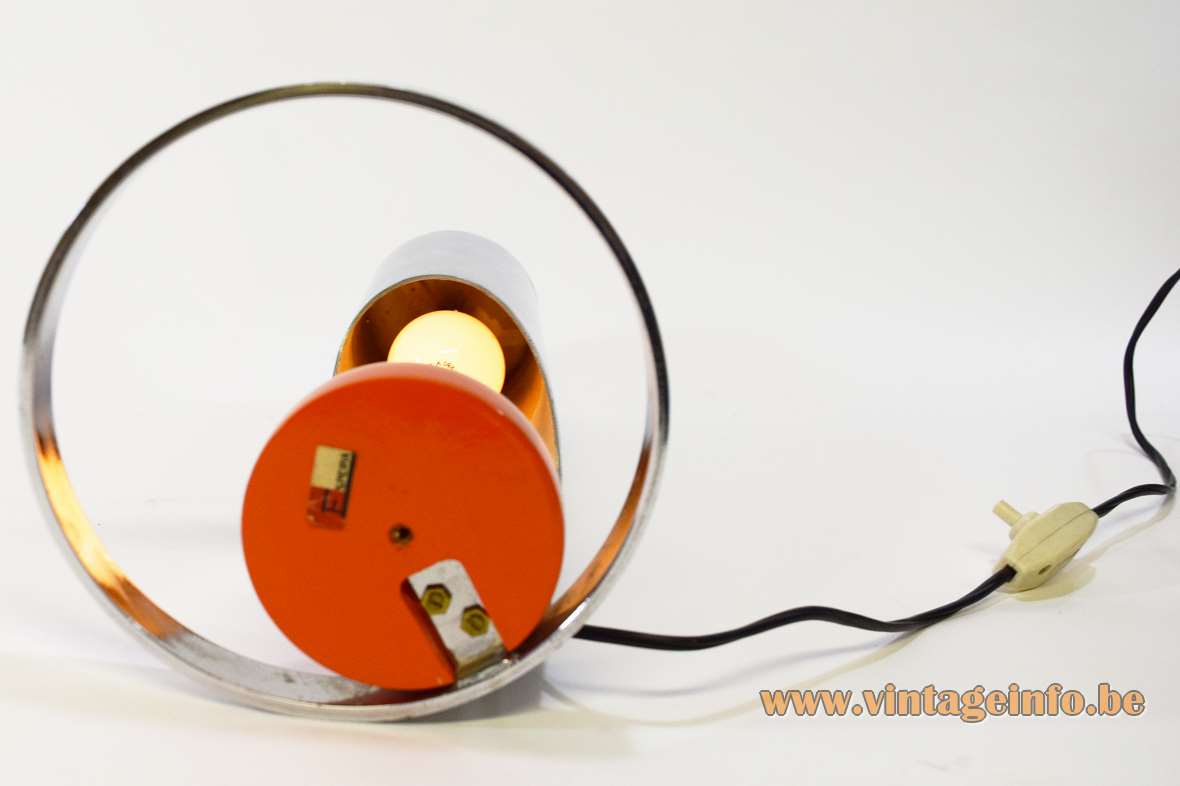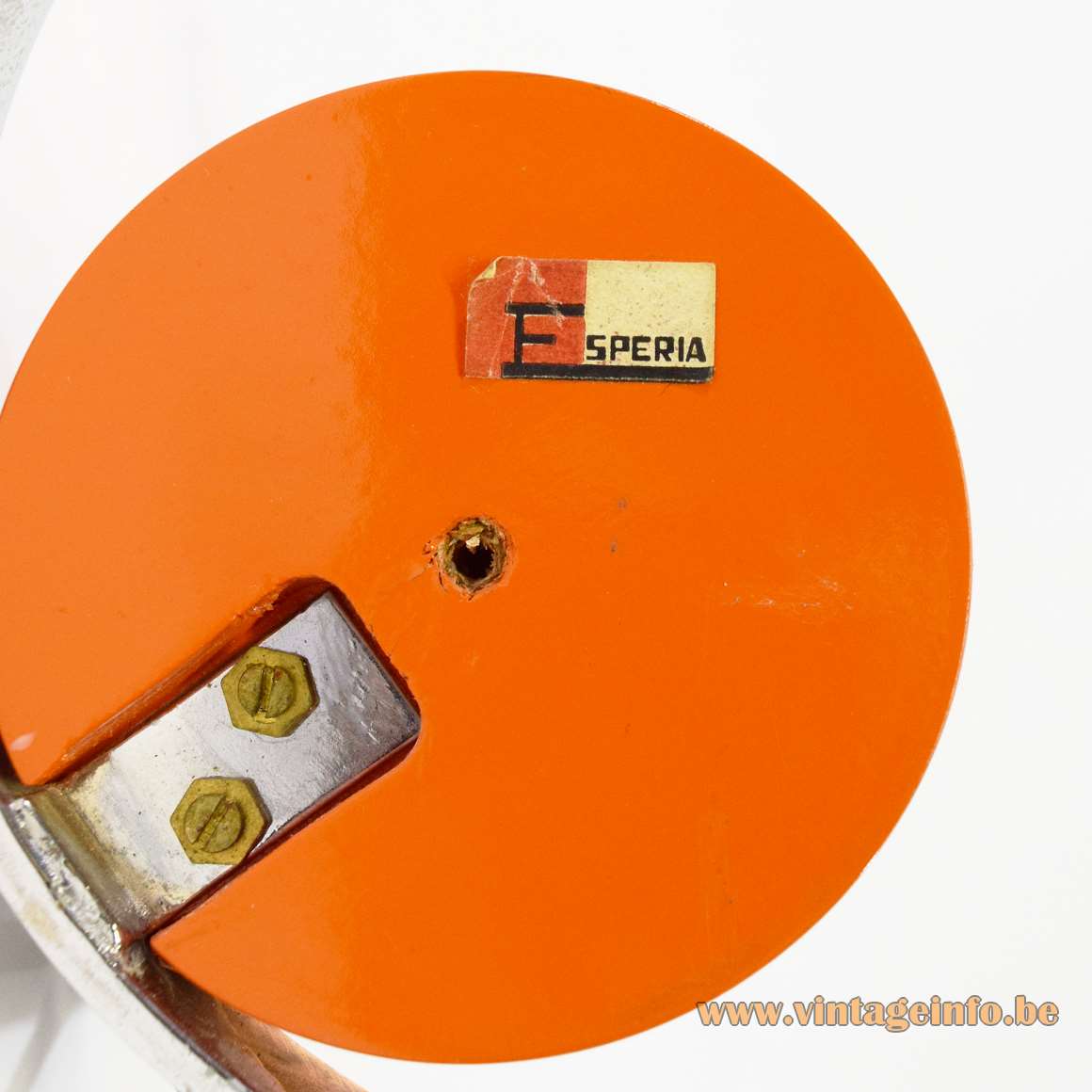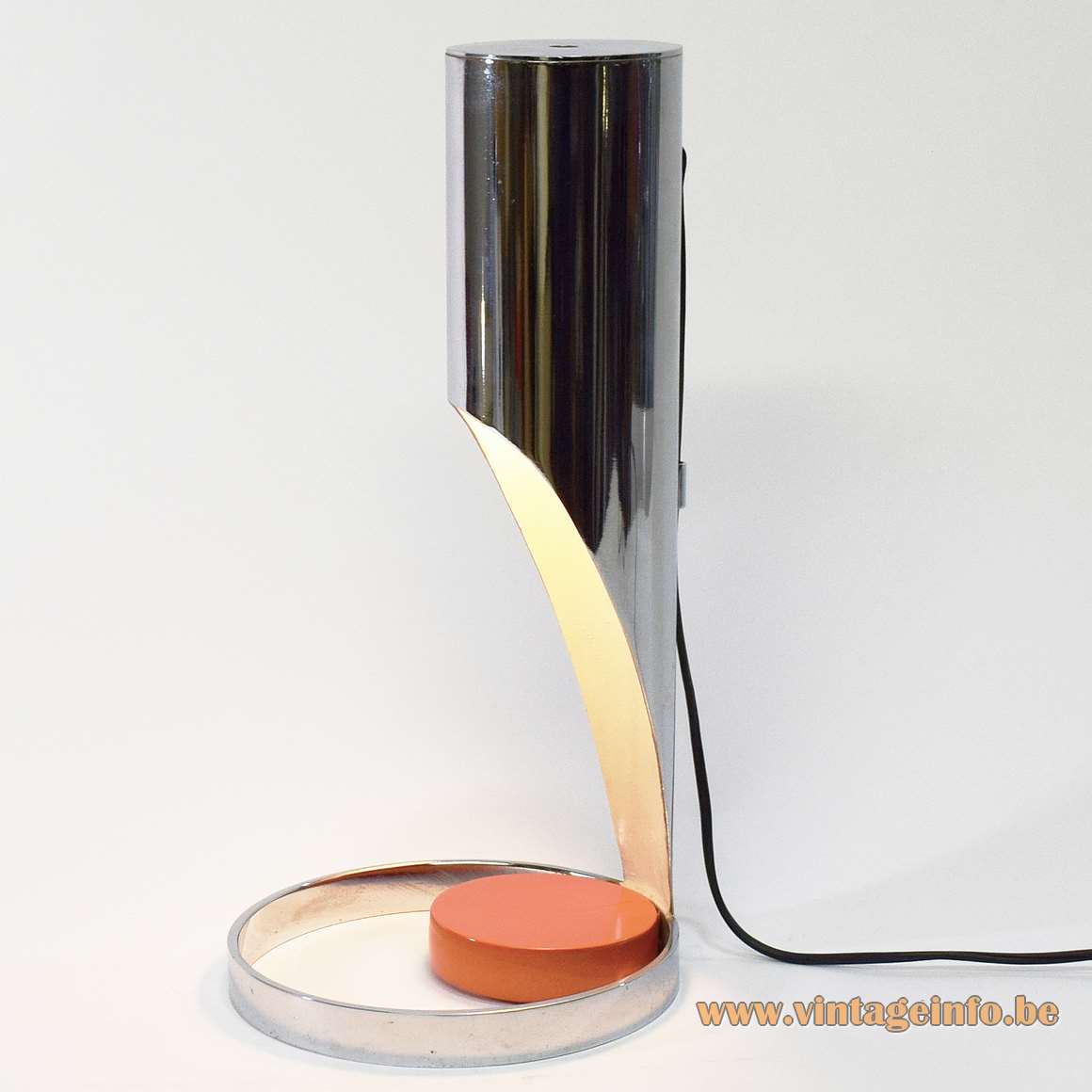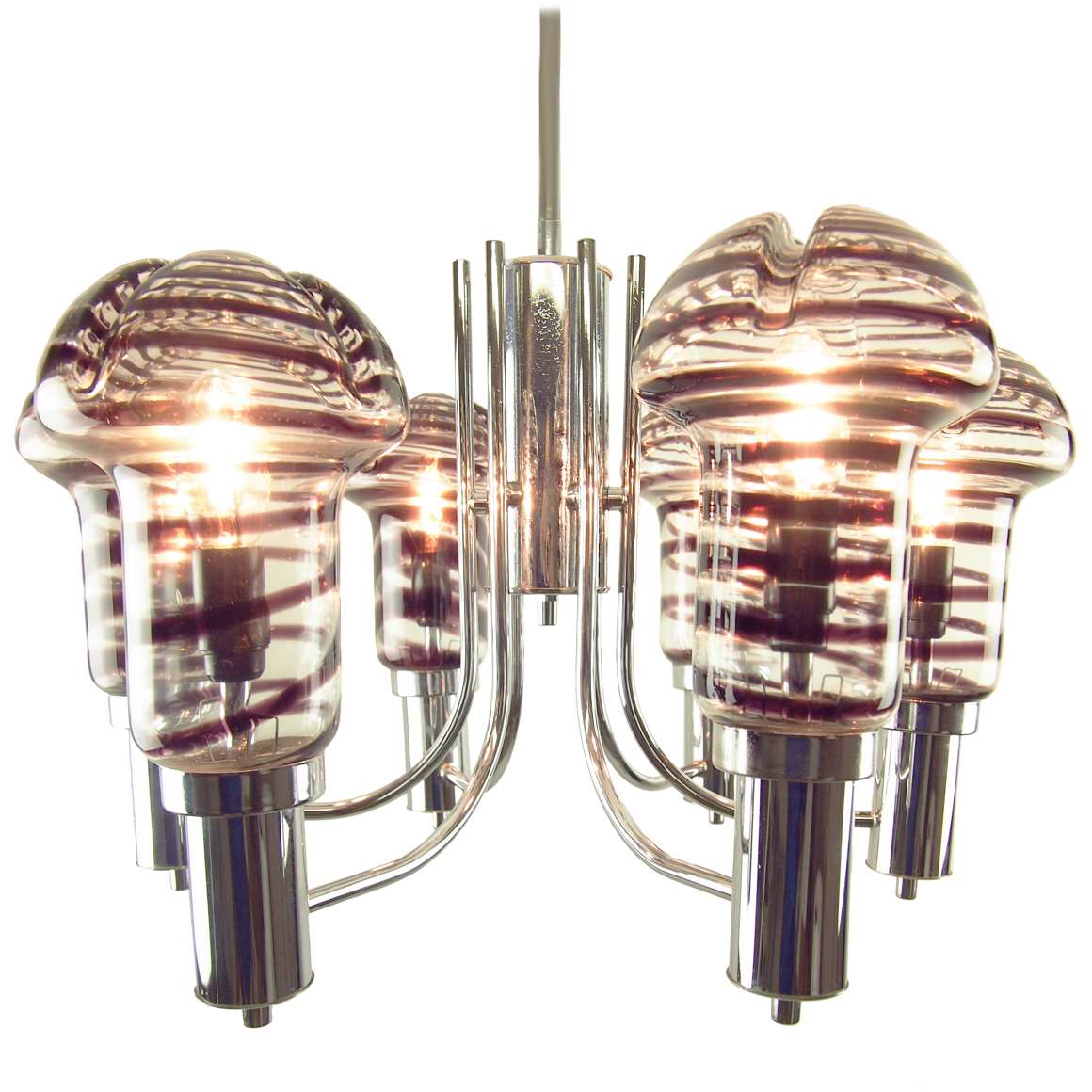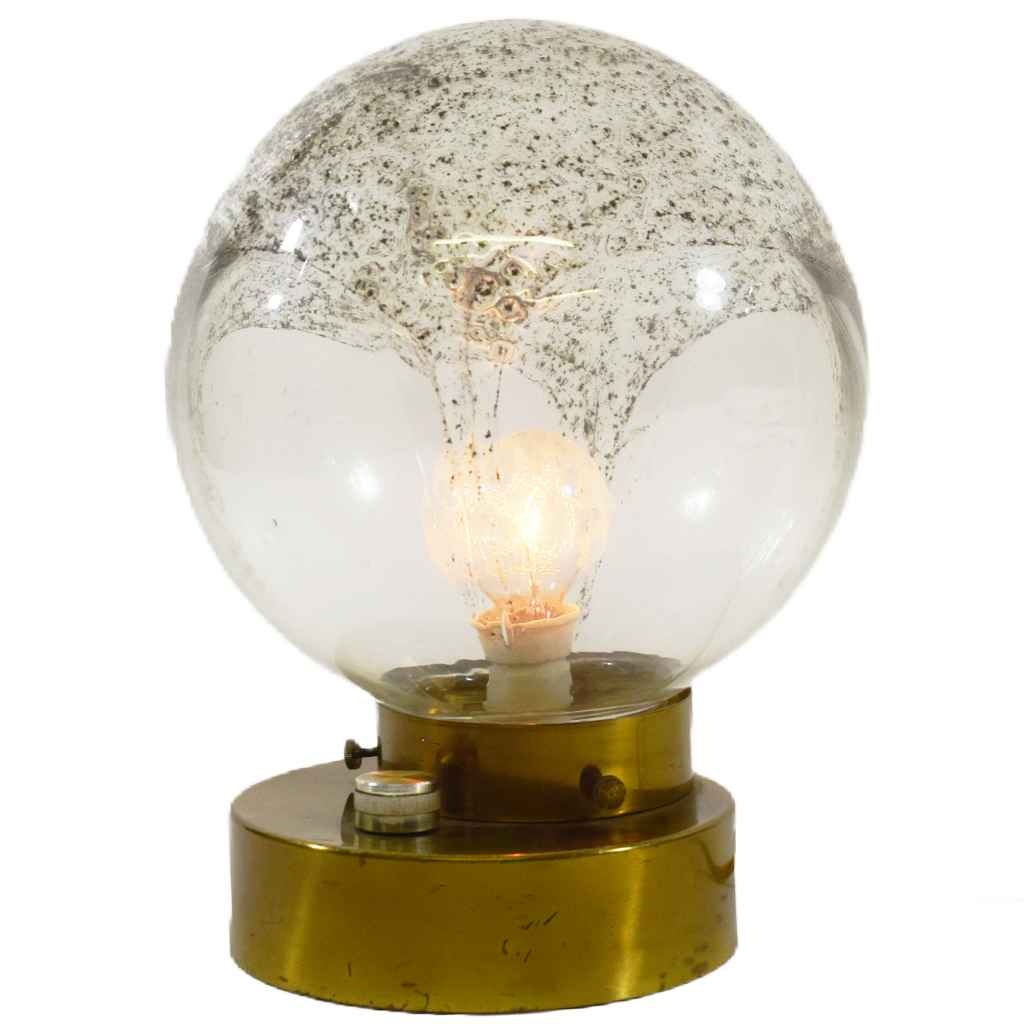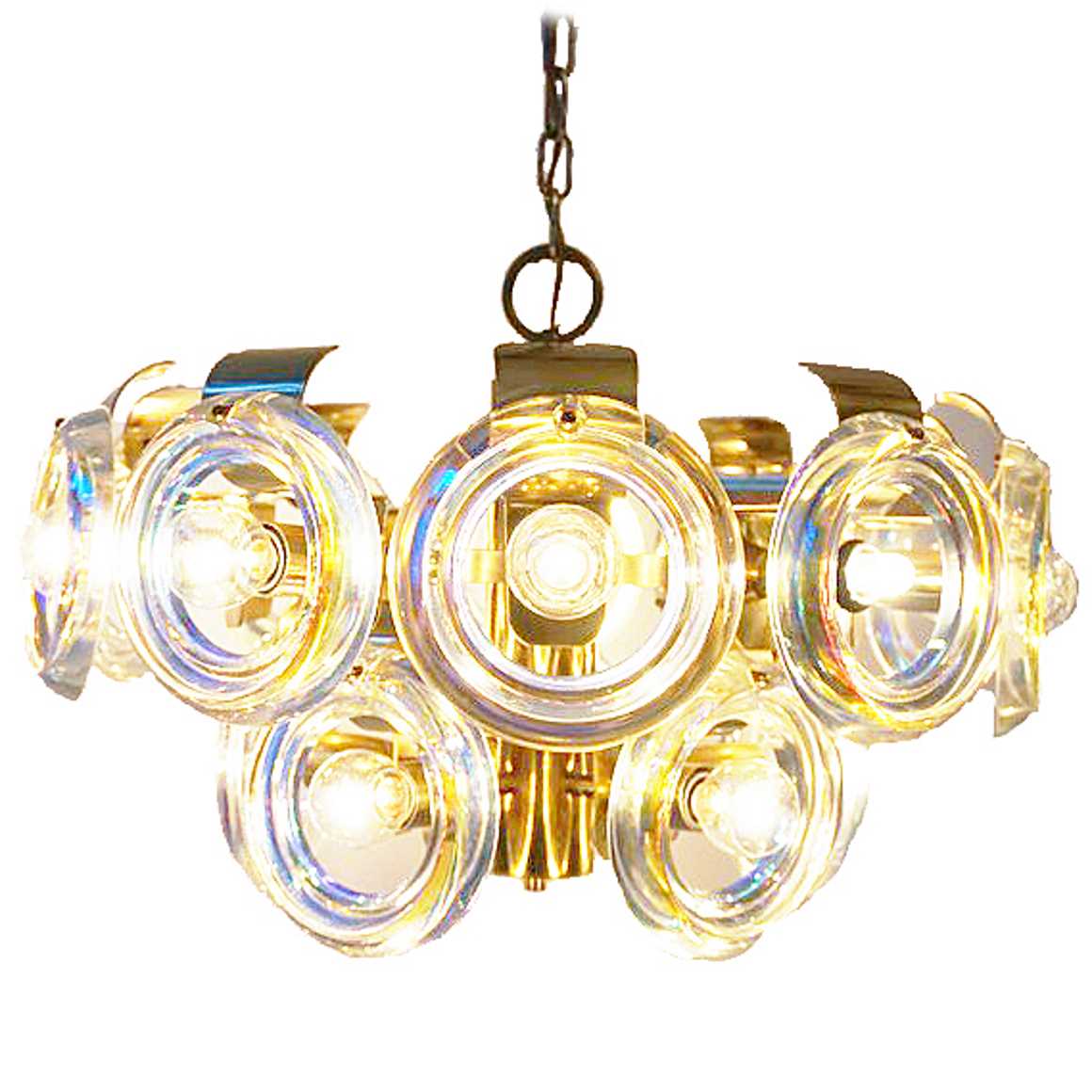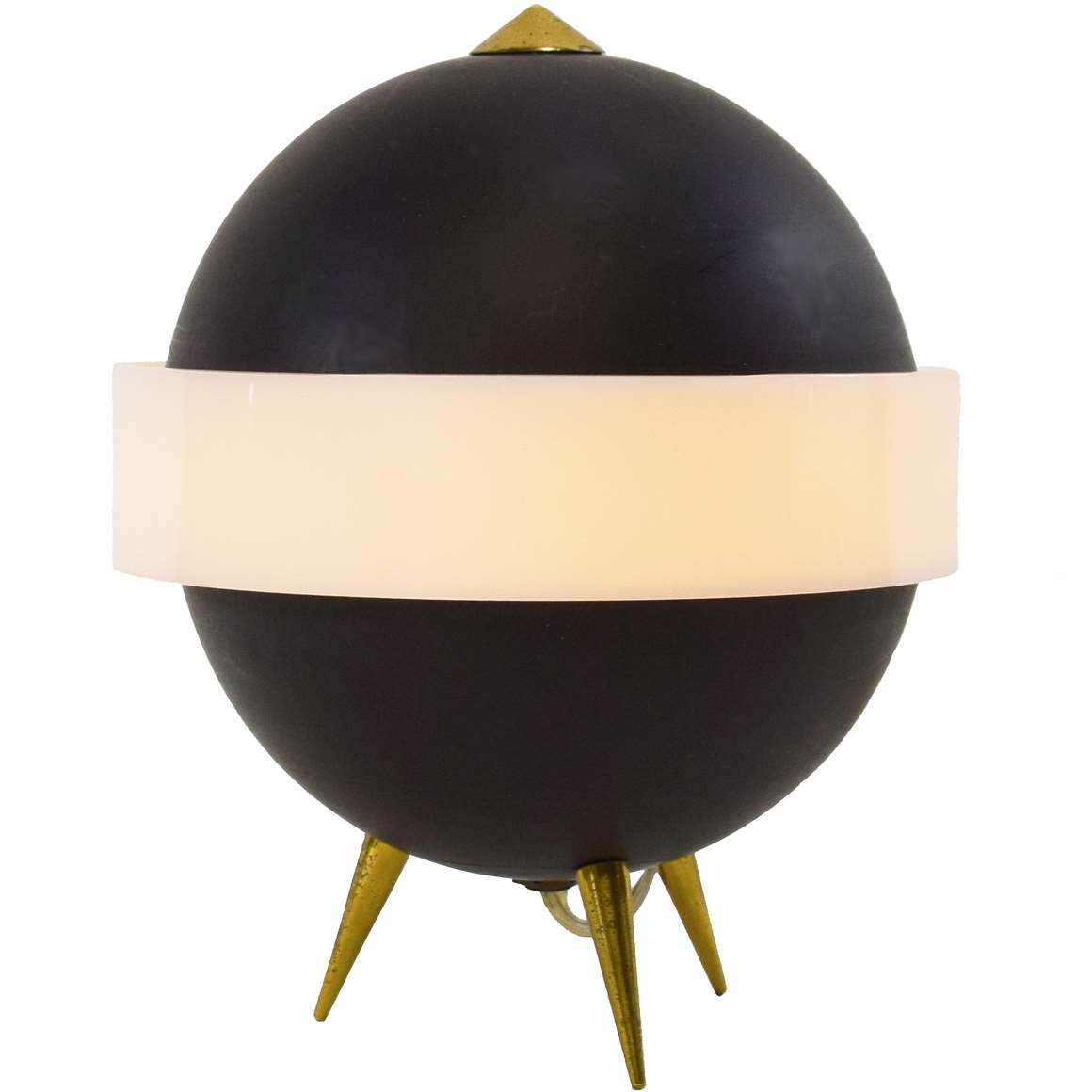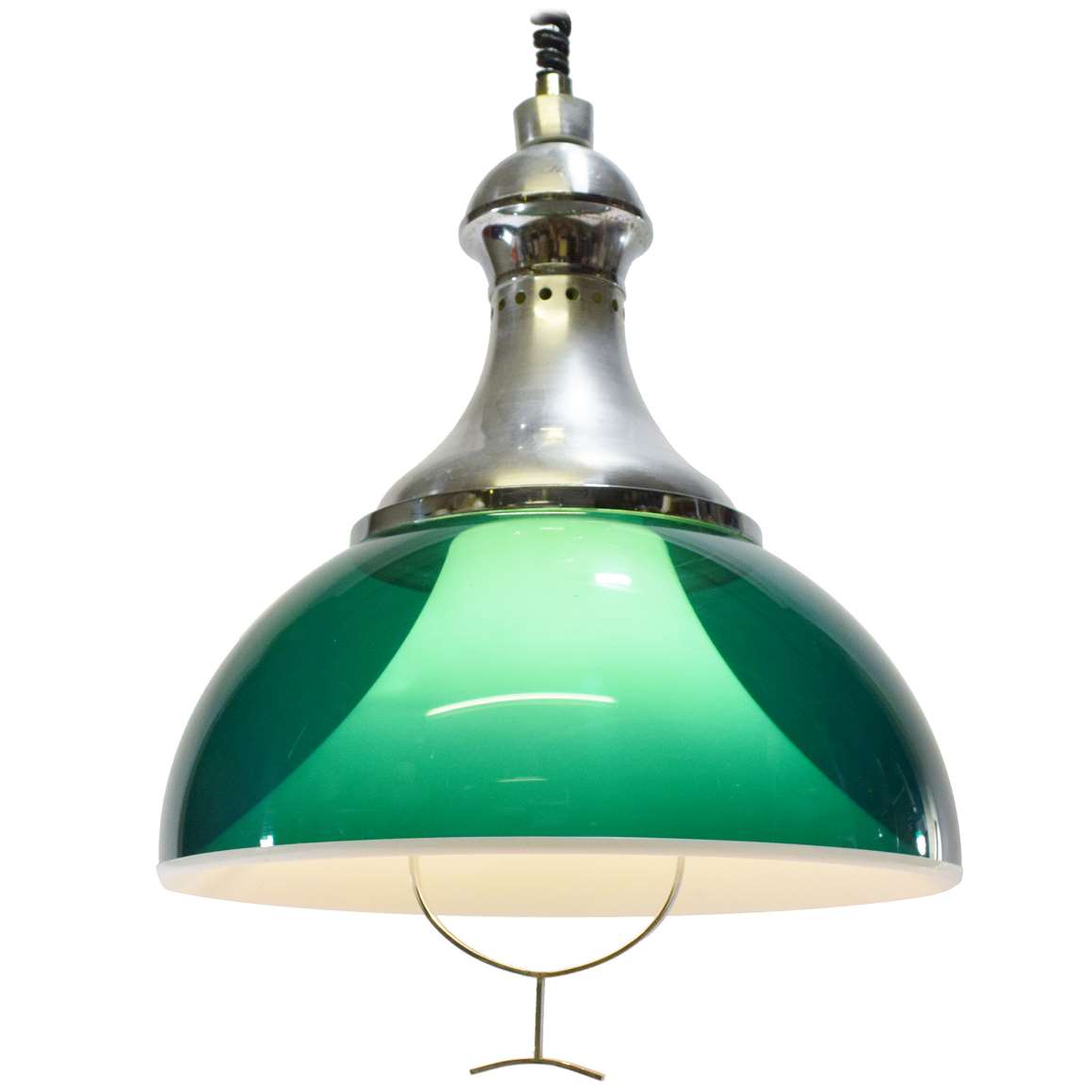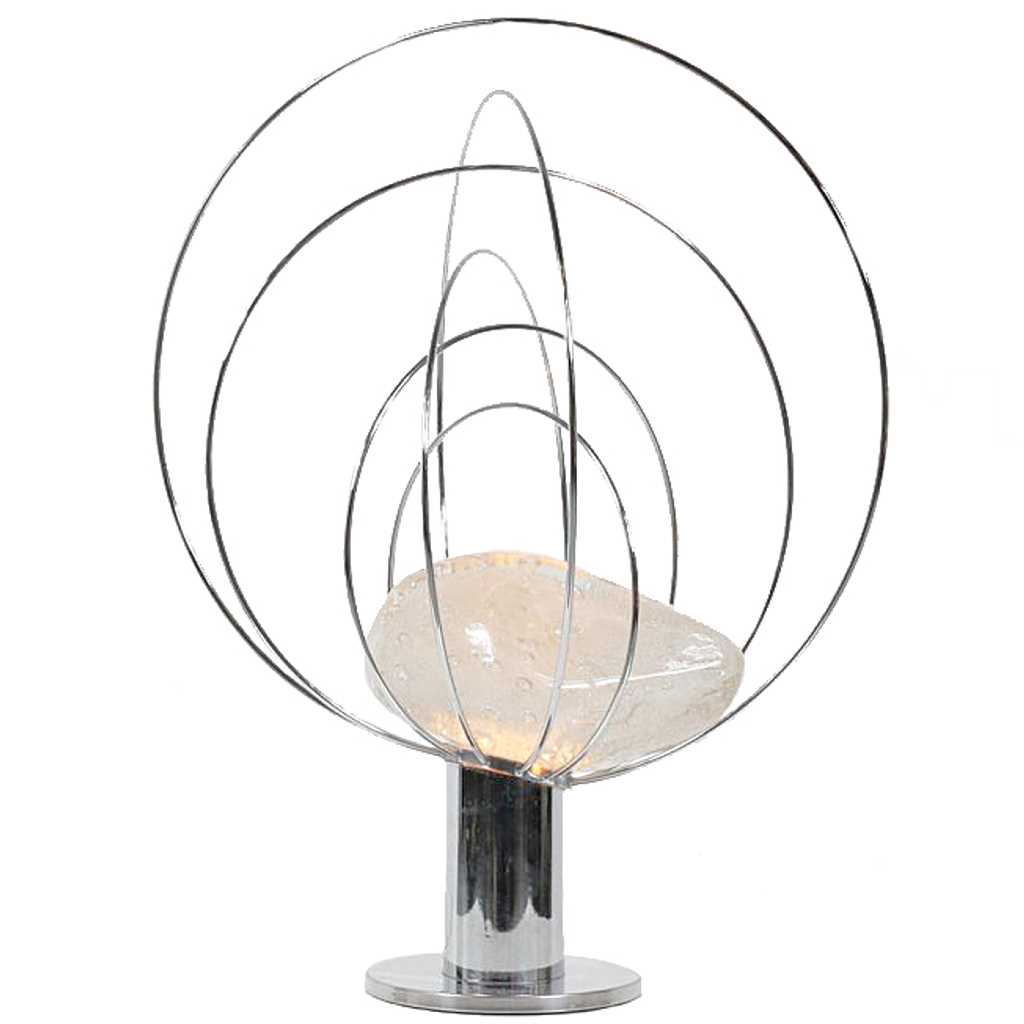Esperia Chrome Tube Table Lamp
Typical red, black and white Esperia label on the orange wooden disc bottom plate.
Links (external links open in a new window)
Academy of Fine Arts in Venice
Vintageinfo
Esperia Chrome Tube Table Lamp
Materials: Thick chromed metal (iron) cylinder. The tubular lampshade is painted white on the inside. Chrome ring base. Orange painted wooden disc inside the ring. Bakelite E14 socket.
Height: 32,5 cm / 12.79”
Width: ∅ 8 cm / 3.14”
Base: ∅ 16 cm / 6.29”
Electricity: 1 bulb E14, 1 x 40 watt maximum, 110/220 volt.
Anytypeof light bulb with an E14 socket canbeused, not a specific one preferred.
Period: 1960s, 1970s – Mid-Century Modern.
Designer: Angelo Brotto (1914 – 2002)
Manufacturer: Esperia, Via Campania, 1D, 53036 Poggibonsi, Italy.
Other versions: This Esperia chrome tube table lamp exists in a slight variation. The ring base was made with or without white paint inside. Of course, it could be that the paint had flaked off and they then removed it further. Angelo Brotto designed several lamps with orange or red and chromed metal.
FontanaArte made a very similar lamp, almost a copy. It is named Toobo and it is a 2007 design by Marco Merendi. The garden lamp version is the most reminiscent. It was in production for some five years. The other models, a floor lamp and wall lamp were in production until 2014. You can find them online with Google images over here.
Angelo Brotto
Born in Venice, Italy, in 1914, and passed away in Campiglia Marittima in 2002. Angelo Brotto studied at the Art School of Venice, where he began exhibiting his work even before graduation. In 1941 he completed his studies at the Academy of Fine Arts in Venice, distinguishing himself by winning every major student competition of his time.
In the years that followed, Brotto received numerous awards for his artistic achievements. His works have been acquired by the Gallery of Modern Art in Rome and Venice, the Rivoltella Museum in Trieste, the Venice Biennale, the Italian Ministry of National Education, the Confederazione Italiana Professionisti ed Artisti, and by several private galleries worldwide.
Esperia
Esperia was founded in 1952 in Poggibonsi, Tuscany, by three friends, Romano Conforti, Eugenio Cortigiano and Mario Moni, who shared the ambition to build a design and lighting company in post-war Italy. Initially rooted in the Tuscan glassmaking tradition, the firm soon expanded its expertise to lighting and furniture design.
During the 1960s, Esperia experienced a period of great creativity and international recognition, largely thanks to its collaboration with Venetian designer and professor Angelo Brotto. Brotto created some of the brand’s most iconic pieces, including the Quasar, Manhattan, Shangrila, Gioa, Gaspare, Ursula, Barnaba, 6038, Astrid, Natalia, Tea, Kit, Giraffa, Pagoda, and Barbarella lamps – all now emblematic of Italian design from the 1960s and 70s.
Esperia’s designs were presented at major exhibitions such as the Salone del Mobile and Euroluce in Milan, and the company also collaborated with renowned glassmakers like Venini.
Today, Esperia continues to operate in Tuscany, maintaining in-house design and production facilities. With over 70 years of experience, the company remains dedicated to craftsmanship and innovation in contemporary lighting. Esperia designers are: Cristina Celestino, Silvano Pulcinelli and the internal design team named Centro Stile Esperia.
Esperia is also a genus of moths and an historic Italian motorcycle brand. Esperia is also a comune in the Italian province of Frosinone.
